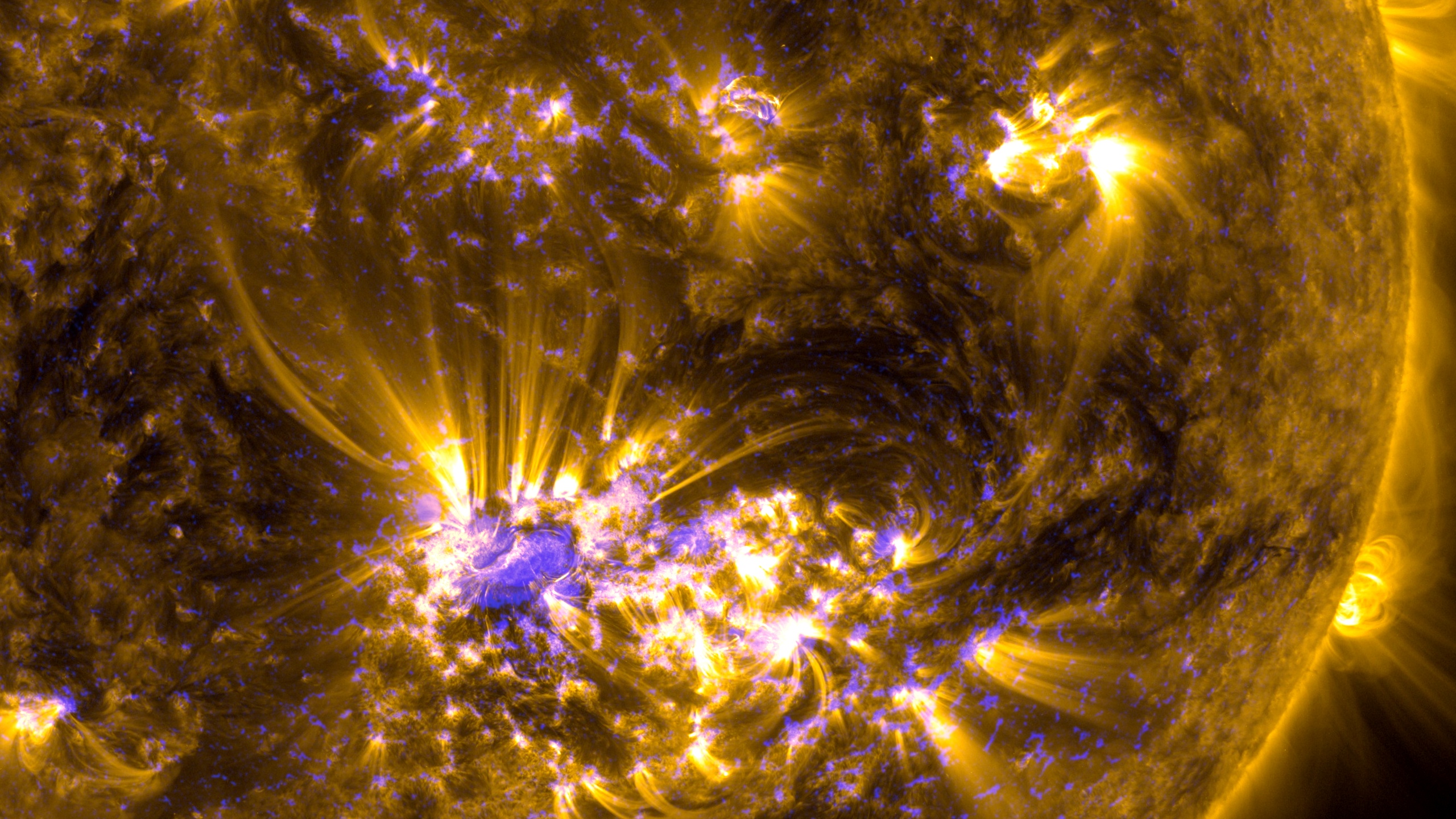Star Power

Explosive events on the sun send an incredible amount of energy into space.
Of the 100 billion stars in our galaxy, the sun is the most important as far as we're concerned. Without the sun, Earth would be a frozen, dead ball of rock. The constant nuclear reactions in the sun’s 27 million degree Fahrenheit core supply our planet with a steady stream of heat and energy necessary for life. But giant explosions on the sun, such as solar flares, can alter the amount of energy coming off our star. In fact, solar flares are one of the most powerful explosive events that occur in the solar system. A single flare can release as much energy as a billion megatons of TNT. At it’s most intense, this energy can disrupt near-Earth space, interrupting radio communications and affecting GPS signals. On July 12, 2012, NASA’s Solar Dynamics Observatory, or SDO, spacecraft observed a massive solar flare erupt from the sun. Watch the video to see views of the explosion captured in different wavelengths of light.
NASA’s SDO spacecraft captured this video of a solar flare erupting on the sun in 2012. Colors represent images taken at specific wavelengths.

Close-up of the active region on the sun's surface where the solar flare erupted.

The energy released from a solar flare causes the region on the sun from where it originated to temporarily brighten.

SDO observes the sun in more than a dozen wavelengths of light to help scientists study features that trigger solar explosions like flares.
For More Information
See NASA.gov
Credits
Please give credit for this item to:
NASA's Goddard Space Flight Center
Video and images courtesy of NASA/SDO/AIA
-
Writer
- Julia Calderone (USRA)
-
Producer
- Scott Wiessinger (USRA)
-
Scientist
- Eric R. Christian (NASA/GSFC)
Release date
This page was originally published on Thursday, June 4, 2015.
This page was last updated on Wednesday, May 3, 2023 at 1:49 PM EDT.
